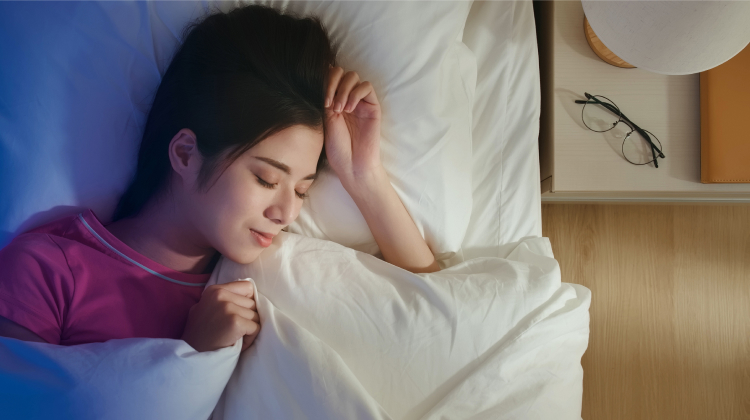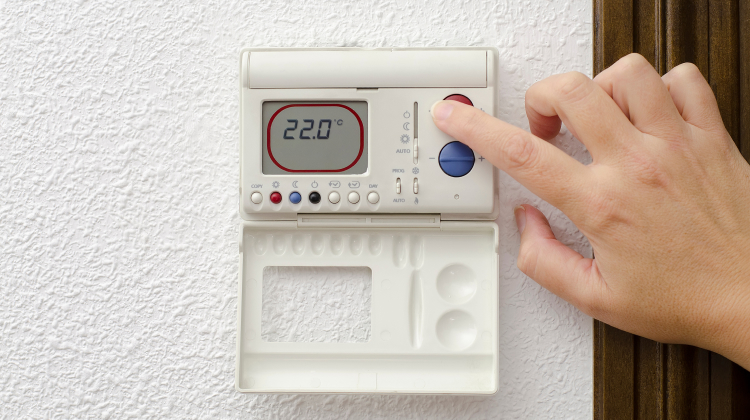Spring Depression: Symptoms, Causes & How To Conquer 2024

The phrase “spring fever” has some truth to it, especially for those suffering from mental illness.
While we normally think depression happens during the cold, dark, and gloomy days of winter, springtime has a surprisingly high increase in both anxiety and depression.
Spring depression is a particular type of major depression and affects people just as severely as those who fall into a winter depression. Spring is also the season when mania, anxiety, and suicide[1] are at their peak.
Find out why springtime exacerbates depression and what you can do to help reduce symptoms and prevent further suffering.
What Is Spring Depression?
Spring depression is a type of major depressive disorder (MDD[2]). It specifically falls under seasonal affective disorder (SAD), which comes and goes with the change of seasons. When depressive episodes are experienced in the spring and summer months, it’s also known as reverse SAD or summer-pattern SAD[3]. Thus, seasonal depression is not only for the winter months, so the commonly thought lack of sunshine is not the only reason it occurs.
Springtime depression affects 10%[4] of those with SAD and can also occur with bipolar disorder. Shifts in temperature and light highly affect people with mental illnesses, and symptoms often worsen during this time. Suicide rates, for example, are highest in the spring[1].
Symptoms Of Springtime Depression
For people with seasonal affective disorder, the signs and symptoms that manifest in the spring can be similar to those that develop as winter begins. As with all major depressive disorders, symptoms will vary from person to person.
- Lethargy, fatigue
- Loss of interest or pleasure in activities
- Persistent low mood (sadness or hopelessness)
- Irritability, anger, restlessness
- Difficulty sleeping or concentrating
- Unexplainable changes in appetite or weight
- Aches, pains, muscle soreness
- Suicidal thoughts or attempts
Specific symptoms for spring and summer depression (summer-pattern SAD):
- Anxiety
- Insomnia and trouble sleeping
- Poor appetite and weight loss
- Agitation and restlessness
- Episodes of violent behavior
When symptoms last for at least two weeks and affect daily life, like working, sleeping, or eating, you may be diagnosed as having MDD. In order to be characterized as having the subtype of SAD, depression would only occur during certain seasons and likely begin to change once the season was over.
However, this doesn’t mean you should wait for symptoms to pass. Suicide rates are at their highest and symptoms can last for the entire season, about four to five months[3].
If you’re having suicidal thoughts, call the free National Suicide Prevention Lifeline at 988 or text HOME to 741741. They will listen and offer guidance on how to help you begin getting the care you need.
Why It Happens
There are several theories as to why depression and suicide increase in the spring. While the exact reasons still aren’t known for certain, a combination of the following factors might be at play.
Circadian Rhythm Disruptions
Circadian rhythms[5] don’t only regulate sleep, they also affect the mental, physiological, and behavioral changes that occur over a 24-hour cycle. The increase in daylight has an immense impact on the body, meaning that misalignment often worsens mental illnesses. Additionally, when daylight saving changes change the clock by an hour, this only complicates your rhythm further.
Finally, extra daylight causes many people to sleep less in the summer and spring, exacerbating underlying anxiety and depression.
Hormonal Fluctuations
The seasons highly affect mood and behavior and one reason is related to the changes in serotonin and hypothalamic-pituitary-adrenal (HPA) function. Studies show[6] that people with major depression have higher cortisol (the stress hormone) levels in the spring and fall. This likely contributes to depression, which often peaks in June and December.
Melatonin[7], for example, is a hormone produced primarily in your brain that lets your body know it’s time to go to bed. People with SAD often produce too much, which increases sleepiness, but not necessarily sleep.
Brain Chemical Shifts
Chemicals may also increase or decrease due to added daylight and less sleep. Serotonin, one of the biggest mood-regulating neurotransmitters, often has reduced activity[3] in people with SAD. Sunlight works to control levels of molecules in the brain, like serotonin, but with the disruption to the circadian rhythm, changes to how serotonin and melatonin function in the brain is disrupted. It is noteworthy that melatonin is derived from serotonin.
Heat And Thermoregulation
Most of us get more irritable or cranky in the sticky, hot, and humid heat waves of the summer, and it’s for a good reason.
Environmental factors like warmer weather put stress on the body since it has to work harder to regulate its temperature. Heat also influences how oxygen is delivered to the brain, which then affects the central nervous system. Serotonin, dopamine, and noradrenaline function may all play a part in thermoregulation, behavioral, and mental states.
If you live in an extremely hot or humid location or experience heat waves, you might notice increasing signs of anxiety, anger, irritability, or depression. Emergency rooms, for example, get an increase of 7%[8] in admissions during this time just from people suffering from mental illnesses.
Family History
There may be a genetic component to spring depression, possibly related to how hormones and brain chemicals function. If you have a family history of SAD[4], bipolar disorder, or other mental health disorders, your chances are higher of experiencing symptoms as well.
Summertime Worries
Finally, summer isn’t all sunshine and roses for everybody. Whether you go on vacation or not, planning a trip, feeling like you’re missing out on a trip, or traveling often comes with worrying about finances and can increase stress. Also, a vacation doesn’t mean you have a great time or that you arrive home feeling rested and relaxed; some vacations are hard work with stopovers, transportation issues, and luggage. Even when a vacation goes well, people often end up with post-vacation blues after traveling.
On top of that, you might be sitting on social media watching what seems like the rest of the world enjoying their summer, making you feel like you’re missing out on some grand summer vacation. And as with any season of the year, social media[9] is well known to increase feelings of loneliness, depression, fear of missing out (FOMO), and envy.
Of course, another big stressor for many is feeling the pressure to look a certain way for the summer. Warmth comes with fewer clothes and more skin and physique showing to the general public. Disordered eating habits or fully developed eating disorders may be triggered or worsen with the stress of the season. Bulimia[10] in particular is associated with seasonal patterns as seen in SAD, making professional treatment all the more necessary.
How To Beat The Springtime Blues
Hoping that your body adjusts to the change in light and temperature is not a long-term solution for managing the springtime blues or major depression. Professional and at-home treatment methods are needed, such as
Talk Therapy

A mental health professional and therapist can help you learn tools that will best serve you to manage springtime depression. If there are underlying factors that you need to work on, the spring could simply be a worsening of issues that already needed help.
While there are many different types of therapy for depression, Cognitive Behavioral Therapy (CBT[11]) for SAD is particularly beneficial in recovery and reducing recurrences.
Personal Coping Practices
A mental health professional is only one piece of the puzzle. Building healthy habits is a process that requires some effort. Luckily, professional support can help you develop healthy habits that manage symptoms even quicker than on your own.
Spend Time In Nature

Nature is one of the most effective methods to reduce stress, anxiety, and depression. Cortisol reduces in as little as 10 minutes[12], and this includes urban green spaces. There’s no need to wait for the weekend; a regular evening walk in the park can have a huge impact long-term. About 120 minutes a week[13], whether spread out or in one day, contributes to reducing symptoms of depression.
Prioritize Connections

Creating strong social connections[14] is key to reducing symptoms of depression. Friends and loved ones help us feel supported, comforted, and understood. Quality time with positive and encouraging friends lowers cortisol and contributes greatly to mental health. You can contact a support group[15] online or in person, and try activities where you can meet people, like writing, art, photography, pottery, or dance classes.
Exercise

Like nature, moving your body is one of the most effective antidepressants[16]. Luckily, even small amounts totaling 150 minutes a week[17] work. You don’t have to go to the gym four days a week, a quiet evening or morning walk (preferably in a green space, if you can), will help reduce and prevent symptoms.
Eat Well And Take Multivitamins

Getting a full blood work report and check-up with a doctor should always be the first step when mental health issues develop. Then, you can consider taking a regular multivitamin with vitamin D, B vitamins, and iron (for women), while also eating enough omega-3s[18] (flax, chia, hemp seeds, or fatty fish). These nutrients[19] are particularly important for brain function and addressing depression.
Create A Sleep Routine

More sunlight and hotter days usually cause a shift in most people’s daily routines. Even though it’s difficult to go to bed early when the sun is out late and restaurant terraces are full, prioritizing healthy sleep patterns is still one of the most essential habits[20] for improving anxiety and depression.
Invest In Cooling Equipment

Since extreme heat and humidity cause hormonal shifts and stress the body to work hard to balance its internal temperature, doing whatever you can to keep yourself cool will help to reduce symptoms. Get a good quality fan, A/C unit, or cooling pad. Try to go to libraries, cafes, or places that have air conditioning if you’re not able to get one at home.
Make Time For Self-Care

Finally, while the self-care movement is growing, a healthy work-life balance still isn’t common. Extra effort needs to be made to make time for yourself. Schedule non-negotiable self-care time and use it for whatever relaxes you. That could be a creative outlet, like art or writing, or an emotional one, like journalling, or taking a soothing bath or spa day.
The Takeaway
Spring depression is not necessarily something that will pass on its own. The season may change, but your depression may not. Waiting can increase the risk of worsening symptoms and is especially dangerous since rates of suicide are highest at this time.
With the increase in cortisol and disruptions in circadian rhythms affecting hormones and sleep, spring is an especially sensitive time for those with mental illnesses. Heatwaves also bring added stress to the body, making it all the more necessary to take preventative measures.
Professional help combined with self-care routines can prevent further cycles from developing and lead to a quicker recovery. Fortunately, over 70%[21] of those suffering from major depression can recover with a proper treatment plan.
+ 21 sources
Health Canal avoids using tertiary references. We have strict sourcing guidelines and rely on peer-reviewed studies, academic researches from medical associations and institutions. To ensure the accuracy of articles in Health Canal, you can read more about the editorial process here
- Cho, C.-H. and Lee, H.-J. (2018). Why Do Mania and Suicide Occur Most Often in the Spring? Psychiatry Investigation, [online] 15(3), pp.232–234. doi:10.30773/pi.2017.12.20.
- National Institute of Mental Health (NIMH). (2021). Depression. [online] Available at: https://www.nimh.nih.gov/health/publications/depression
- National Institute of Mental Health (NIMH). (2022). Seasonal Affective Disorder. [online] Available at: https://www.nimh.nih.gov/health/publications/seasonal-affective-disorder
- Medlineplus.gov. (2013). Seasonal affective disorder: MedlinePlus Genetics. [online] Available at: https://medlineplus.gov/genetics/condition/seasonal-affective-disorder/
- KURLANSIK, S.L. and IBAY, A.D. (2012). Seasonal Affective Disorder. American Family Physician, [online] 86(11), pp.1037–1041. Available at: https://www.aafp.org/pubs/afp/issues/2012/1201/p1037.html
- Sher, L., Oquendo, M.A., Galfalvy, H.C., Zalsman, G., Cooper, T.B. and Mann, J.J. (2005). Higher cortisol levels in spring and fall in patients with major depression. Progress in Neuro-Psychopharmacology and Biological Psychiatry, [online] 29(4), pp.529–534. doi:10.1016/j.pnpbp.2005.01.011.
- Tordjman, S., Chokron, S., Delorme, R., Charrier, A., Bellissant, E., Jaafari, N. and Fougerou, C. (2017). Melatonin: Pharmacology, Functions and Therapeutic Benefits. Current Neuropharmacology, [online] 15(3), pp.434–443. doi:10.2174/1570159×14666161228122115.
- Lõhmus, M. (2018). Possible Biological Mechanisms Linking Mental Health and Heat—A Contemplative Review. International Journal of Environmental Research and Public Health, [online] 15(7), p.1515. doi:10.3390/ijerph15071515.
- Hunt, M.G., Young, J., Marx, R. and Lipson, C. (2018). No More FOMO: Limiting Social Media Decreases Loneliness and Depression. [online] ResearchGate. Available at: https://www.researchgate.net/publication/328838624_No_More_FOMO_Limiting_Social_Media_Decreases_Loneliness_and_Depression?enrichId=rgreq-c18b0d7114617bde6d13825484b39b06-XXX&enrichSource=Y292ZXJQYWdlOzMyODgzODYyNDtBUzo2OTEwNzYzMjMwODIyNDRAMTU0MTc3Njg0Mzc0Mg%3D%3D&el=1_x_2&_esc=publicationCoverPdf
- Fornari, V.M., Braun, D.L., Sunday, S.R., Sandberg, D.E., Matthews, M., Chen, Mandel, F.S., Halmi, K.A. and Katz, J.L. (1994). Seasonal patterns in eating disorder subgroups. Comprehensive Psychiatry, [online] 35(6), pp.450–456. doi:10.1016/0010-440x(94)90228-3.
- NCCIH. (2019). Seasonal Affective Disorder and Complementary Health Approaches : What the Science Says. [online] Available at: https://www.nccih.nih.gov/health/providers/digest/seasonal-affective-disorder-and-complementary-health-approaches-science
- Meredith, G.R., Rakow, D.A., Eldermire, E.R.B., Madsen, C.G., Shelley, S.P. and Sachs, N.A. (2020). Minimum Time Dose in Nature to Positively Impact the Mental Health of College-Aged Students, and How to Measure It: A Scoping Review. Frontiers in Psychology, [online] 10. doi:10.3389/fpsyg.2019.02942.
- White, M.P., Alcock, I., Grellier, J., Wheeler, B.W., Hartig, T., Warber, S.L., Bone, A., Depledge, M.H. and Fleming, L.E. (2019). Spending at least 120 minutes a week in nature is associated with good health and wellbeing. Scientific Reports, [online] 9(1). doi:10.1038/s41598-019-44097-3.
- House, J.S., Landis, K.R. and Umberson, D. (1988). Social Relationships and Health. Science, [online] 241(4865), pp.540–545. doi:10.1126/science.3399889.
- Mental Health America. (2022). Find Support Groups. [online] Available at: https://www.mhanational.org/find-support-groups
- Apa.org. (2022). APA PsycNet. [online] Available at: https://psycnet.apa.org/record/2008-03723-017
- CDC (2022). How much physical activity do adults need? [online] Centers for Disease Control and Prevention. Available at: https://www.cdc.gov/physicalactivity/basics/adults/index.htm
- Logan, A.C. (2004). Lipids in Health and Disease, [online] 3(1), p.25. doi:10.1186/1476-511x-3-25.
- Coppen, A. and Bolander-Gouaille, C. (2005). Treatment of depression: time to consider folic acid and vitamin B12. Journal of Psychopharmacology, [online] 19(1), pp.59–65. doi:10.1177/0269881105048899.
- Scott, A.J., Webb, T.L., Martyn-St James, M., Rowse, G. and Weich, S. (2021). Improving sleep quality leads to better mental health: A meta-analysis of randomised controlled trials. Sleep Medicine Reviews, [online] 60, p.101556. doi:10.1016/j.smrv.2021.101556.
- Novick, D., Montgomery, W., Vorstenbosch, E., Moneta, M.V., Duenas, H. and Haro, J.M. (2017). Recovery in patients with major depressive disorder (MDD): results of a 6-month, multinational, observational study. Patient Preference and Adherence, [online] Volume 11, pp.1859–1868. doi:10.2147/ppa.s138750.



